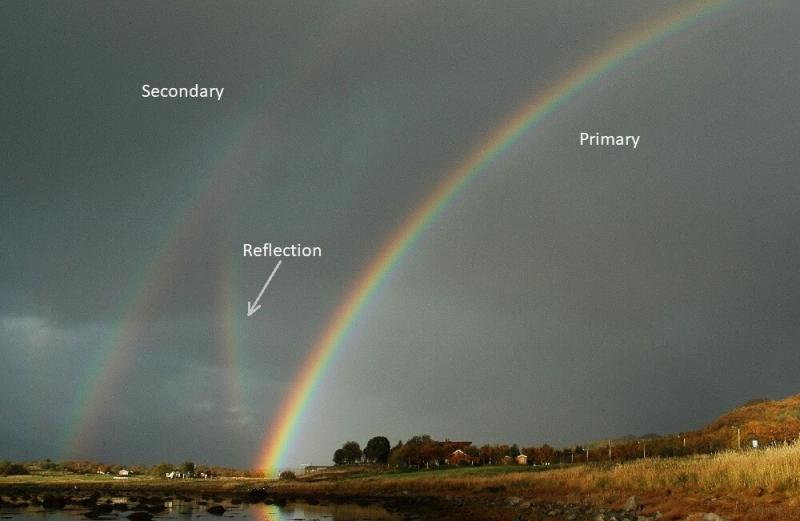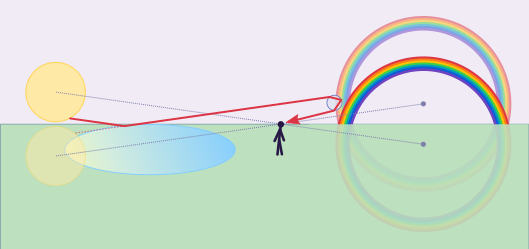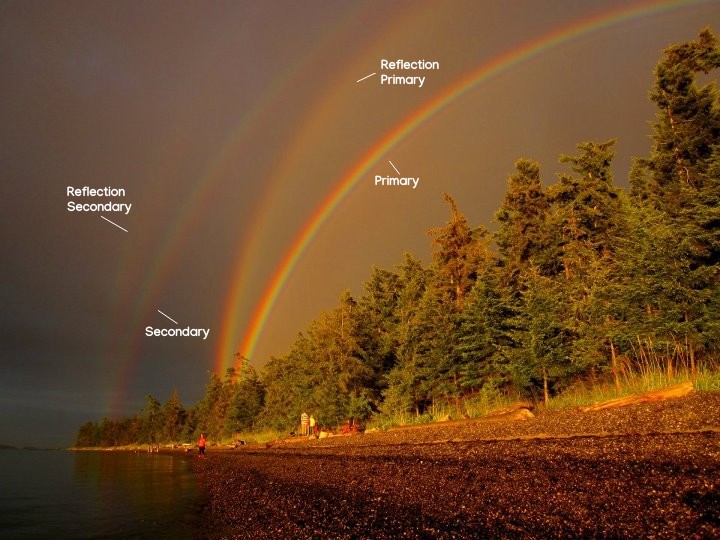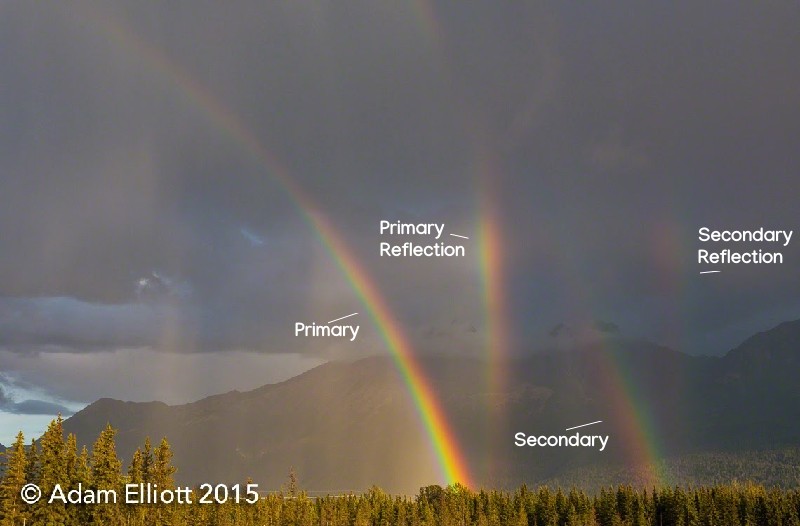Reflection Rainbows
These may be referred to as "double rainbows" like secondary rainbows often are, but while secondary rainbows are relatively common, these are more rare.
Reflection Rainbows
 APOD Sep 7, 2007 - NASA (cropped and annotated)
APOD Sep 7, 2007 - NASA (cropped and annotated)
These are not the reflection of rainbows in water, but rainbows created by the reflection of light from a body of water.
 RainbowSpec
RainbowSpec
Sunlight hits a still body of water, reflects off of the surface, and then enters the raindrops, forming another rainbow. The center of the reflection rainbow is above the primary antisolar point.Reflection Rainbows - AtOpt
The reason the reflection antisolar point is not opposite of the real sun is because of the direction of the light when it enters the drop. If we extend the entering light path past the body of water, we can imagine a fake sun that could have made the same path but straight, without reflecting. The reflection antisolar point is opposite of this imaginary sun.

The fake sun is a mirror image of the real sun, reflected directly across the horizon, so since the horizon is perfectly in the middle of the suns, it is in the middle of the antisolar points, thus the rainbow and the reflection rainbow intersect at the horizon. As the sun sets and the antisolar point also gets closer to the horizon, the primary rainbow and the reflection rainbow become closer together. Conversely, the higher the sun, the further apart the primary and reflection rainbows will be.Reflection Rainbows - AtOpt When the horizon intersects the sun in half, the mirror sun will be in the same place, as will the antisolar points, creating a single rainbow again.
Considering as the sun rises, the anti-solar point of the reflection rainbow also rises, is it possible to see reflection rainbow when the sun is too high to see a regular rainbow? Theoretically this reflection rainbow would be high in the sky, its full circle visible. I have not seen any evidence of this occuring, however, but why not?
There are a number of reasons we don't see a reflection rainbow without a primary. Considering rainbows are so large, a body of water must be very large and still to reflect one. The top portion of a primary rainbow is also normally fainter. And most importantly, as the angle of light to water increases, the much less the water reflects it.

At 0 degress (the horizon), water reflects 100% of the light that hits it. This decreases dramatically to barely any light being reflected when the sun is at 30+ degrees above the body of water/horizon. Thus, above 42 degrees when the primary rainbow disappears, a tiny fraction of light is reflected by the body of water before it even enters the raindrops.
More About Converging Rainbows - OikofugeNote that the source of water is typically behind the viewer (much like the sun is behind the viewer), although it can be infront of the viewer. Reflection Rainbows - AtOpt The light could also reflect off of wet land like wet sand. Said water or wet land must also be still/flat, otherwise the light will be reflected in erratic directions, preventing it from forming a rainbow.
Secondary rainbows can also have reflection versions!
Most "quadrupal" rainbows will be because of reflection rainbows; the primary and its secondary, plus the reflection rainbow and its own secondary.
Next Page: Split Rainbows

